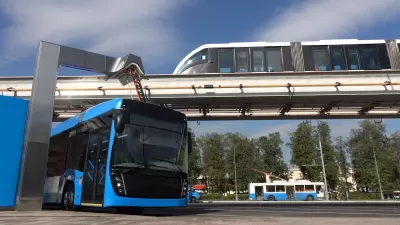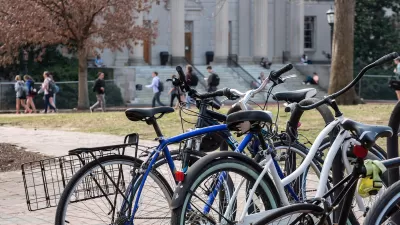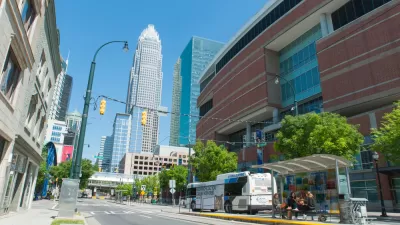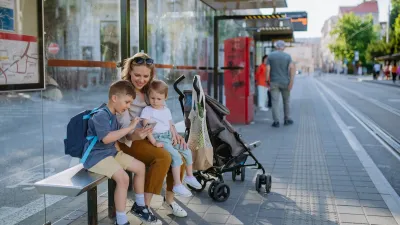Discover how sustainable transportation solutions are transforming urban mobility, enhancing efficiency, and reducing environmental impact.

Transportation is one of the most complex aspects of urban development and planning. As the world seeks to lower carbon emissions, city officials are prioritizing greener travel.
While the environmental advantages are impressive, blending sustainability with urban mobility has additional benefits. The real challenge lies in the widespread integration and adoption of ecologically sound transport options.
The benefits of sustainable transportation
Sustainable transportation is far more efficient and healthier than conventional systems. It also makes urban mobility possible for people who wouldn’t otherwise have access. Here are three benefits of greener roadway solutions.
-
Less traffic congestion
Unsurprisingly, Los Angeles is the United States’ most congested metropolitan area for traffic. According to a Consumer Affairs report, Washington, D.C., Seattle, San Francisco, and New York City followed close behind. Los Angeles, in particular, experiences seven hours and 55 minutes of traffic congestion daily, driven by a robust economy and bustling population.
Implementing sustainable transportation options and the accompanying infrastructure — such as bike-sharing initiatives and energy-efficient buses and trains — is critical to alleviating the need for personal vehicles. Public transportation can easily move commuters from place to place while encouraging cycling promotes emissions-free travel.
-
Lower emissions
In the U.S., a whopping 28 percent of greenhouse gas emissions derive from the transportation sector. This is primarily due to countless fossil fuel-powered vehicles on roadways.
The United Nations says transitioning from cars to public transportation decreases emissions by 2.2 metric tons annually per person. If avoiding driving a personal vehicle is impossible, carpooling still helps reduce 1 metric ton of carbon dioxide (CO2).
City transportation systems must explore more efficient operational modes, including cleaner fuels. Upgrading urban infrastructure — like creating additional bike lanes and adopting cleaner fuels — will further improve air quality in city environments.
-
Expanded accessibility
Sustainable accessibility is the ability to reach essential services and amenities regardless of where one lives or the time of day. Green transportation options are reliable and affordable for people of all races and social classes.
Urban planners must reconsider land use and compare existing infrastructure to the public’s needs. Providing people with more flexible travel modes and accounting for intercity routes based on population density is equally essential for optimizing mobility.
Challenges of implementing green urban mobility
Green transportation in urban areas faces numerous hurdles for widespread adoption. For one thing, the cost to implement these cutting-edge solutions is high. For instance, a zero-emissions public transportation fleet in Seattle requires a $158 million investment to convert 30 percent of its bus fleet by 2029. Through 2050, the transit project will need $1.4 billion.
Cities will also need to modify existing infrastructure to accommodate sustainable systems. A Smart Growth America and Hattaway Communications survey found that 22 percent of respondents want cities to repair roads so they work better for them.
Infrastructural upgrades will be wasted if seldom used. The adoption of sustainable transportation heavily relies on public perception. Overcoming a lack of awareness is critical. Urban cities should reach out to the community with information about sustainable transportation’s environmental impact and improved accessibility.
Spearheading sustainable transportation
Cities worldwide have begun transitioning to a more sustainable mobility system. In North America, some metropolitan areas have had excellent success.
As Portland, Oregon, strives to achieve net-zero emissions by 2050, it’s focusing on optimizing green transportation and infrastructure. The city made the StreetLight Climate Impact Index’s top 10 urban areas with widespread transit access, attaining low vehicle miles traveled per capita.
In addition to creating more efficient public transit, Portland has expanded its bike infrastructure and electric vehicle incentives and explored zero-emission delivery zones to boost adoption. Integrating the international standards for environmental and quality management systems — ISO 14001 with ISO 9001 — can further ensure the city meets its sustainability initiatives and increases its profitability and operational performance within the transportation sector.
San Francisco, California, has also begun adopting sustainable travel. Hydrogen fuel cells are proving beneficial for EV performance, delivering 300 miles of runtime before charging.
In its efforts to electrify urban mobility, San Francisco intends to install 1,500 EV charging stations by 2050, making the transition to green transit even more widespread. Likewise, San Mateo County Transit — which operates in San Francisco — has ordered 108 hydrogen fuel-cell 40-foot buses for cleaner transport.
Driving sustainable urban transport in the climate era
Sustainable transportation is the path toward greater climate resilience. By creating greener transit, cities become cleaner and more accessible for everyone.

Alabama: Trump Terminates Settlements for Black Communities Harmed By Raw Sewage
Trump deemed the landmark civil rights agreement “illegal DEI and environmental justice policy.”

Planetizen Federal Action Tracker
A weekly monitor of how Trump’s orders and actions are impacting planners and planning in America.

Why Should We Subsidize Public Transportation?
Many public transit agencies face financial stress due to rising costs, declining fare revenue, and declining subsidies. Transit advocates must provide a strong business case for increasing public transit funding.

Judge Orders Release of Frozen IRA, IIJA Funding
The decision is a victory for environmental groups who charged that freezing funds for critical infrastructure and disaster response programs caused “real and irreparable harm” to communities.

‘Clybourne Park’ Sets Stage for Housing Equity Discussions
Clybourne Park, a play exploring race, real estate, and community tensions, can set the stage for discussion on the lasting impacts of housing discrimination, gentrification, and the fight for affordability.

Understanding Road Diets
An explainer from Momentum highlights the advantages of reducing vehicle lanes in favor of more bike, transit, and pedestrian infrastructure.
Urban Design for Planners 1: Software Tools
This six-course series explores essential urban design concepts using open source software and equips planners with the tools they need to participate fully in the urban design process.
Planning for Universal Design
Learn the tools for implementing Universal Design in planning regulations.
Caltrans
Smith Gee Studio
Institute for Housing and Urban Development Studies (IHS)
City of Grandview
Harvard GSD Executive Education
Toledo-Lucas County Plan Commissions
Salt Lake City
NYU Wagner Graduate School of Public Service






























